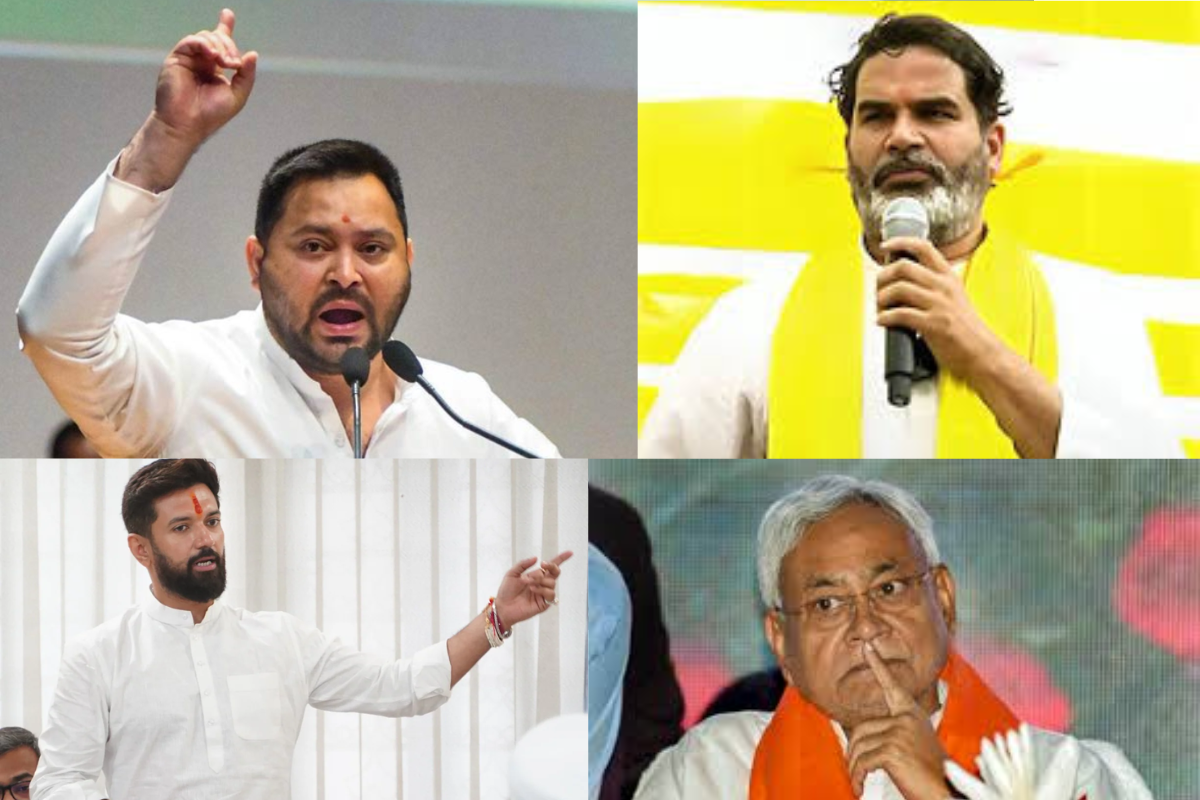Bihar government released the data of controversial caste-based census
Nitish Kumar-led Bihar government on Monday released the results of its controversial caste-based survey just months before the Lok Sabha…

Bihar
Bihar has always played a unique role in shaping India’s political story. From being the land of ancient republics to the birthing of modern mass movements led by Jayaprakash Narayan, it holds a rich legacy of political change. Yet, it has also seen the rise of strong regional leaders who have built their power on caste arithmetic and family legacies. Now, as elections draw near, Bihar stands at a defining point. The key question before voters is? Will they choose development and reform or continue to reward dynasty politics
Nitish Kumar came to power in 2005, promising change after years of what many called “jungle raj” under Lalu Prasad. He focused on roads, education, law and order. Bihar saw real improvements during his early years. However, after nearly two decades, his image has faded. Many now see him as a political survivor rather than a visionary. He has switched sides often allying with BJP, then breaking away, only to return again. Recent surveys show his popularity declining sharply. As per sources, his popularity is at a low of 15.4 %, behind Tejashwi and Prashant Kishor. Critics also accuse him of sidelining his own son from politics while still favoring relatives in decision-making roles. Voters now wonder, has Nitish run out of ideas, or can he still deliver?
Tejashwi Yadav, son of Lalu Prasad Yadav, has slowly emerged from his father’s shadow. He speaks of jobs, better governance, and social justice. His party RJD, now presents him as a leader for the youth. Tejashwi has promised 10 lakh government jobs, free electricity, and better health infrastructure. These promises have struck a chord, especially with first-time voters and the unemployed. However, the questions remain. Can he be seen as more than a successor to Lalu’s dynasty? His campaign often lacks grassroots energy, and some feel he depends too much on old party networks. Will people see him as a fresh hope or just another dynastic face?
Prashant Kishor, once the man behind the scenes of many winning campaigns, has now entered politics himself. Through his Jan Suraaj campaign, he is trying to build a movement from the ground up. He has walked across Bihar, speaking directly to villagers and youth. His message is clear; Bihar needs new politics, not old slogans. He promotes ideas of education reform, healthcare, and people-led governance. Early surveys show he has significant support among urban and young voters. However, many ask, can a strategist succeed in Bihar’s deeply caste-driven and emotional political landscape? His clean image is a plus, but his lack of administrative experience could be a challenge. Still, 60 % of respondents say they support his vision for “Jan Suraaj.” Can a technocrat break Bihar’s traditional mold?
Chirag Paswan is the son of late Ram Vilas Paswan, a respected Dalit leader with national reach. Chirag is trying to rebuild his party and image after his father’s death. He has launched the “Bihar First, Bihari First” campaign, focusing on infrastructure, jobs, and industrial growth. His attempt is to move beyond caste politics and present a modern, youth-driven agenda. However, his political base is still small. His poll numbers are modest (5–10 %), though his alliance with the BJP gives him strength. Many voters see him more as a dynastic figure than a serious reformer. Will he succeed in turning sympathy and legacy into real votes?
The 2025 Bihar election is not just about parties, it’s about trust, ideas, and the future. Nitish offers experience but faces fatigue. Tejashwi has energy but carries a heavy legacy. Prashant Kishor brings fresh ideas but lacks political roots. Chirag tries to mix legacy with modern goals. The voter must cut through the noise and decide what matters more, family names or actual change. Bihar’s youth, especially those under 30, may play a key role in this choice. They care more about jobs, education, and stability than caste or history.
Bihar’s people have shown time and again that they know how to surprise the political class. In 2005, they broke up with the past and voted for change. In 2015, they chose social alliances. In 2020, they returned to stability during uncertain times. Now, in 2025, they face a new question, should they go with familiar names or take a risk on fresh faces? Will they vote for actual development, or let dynastic politics continue to shape their future? The answer will define not just who rules Bihar, but what kind of politics Bihar will stand for in the years to come.
Advertisement